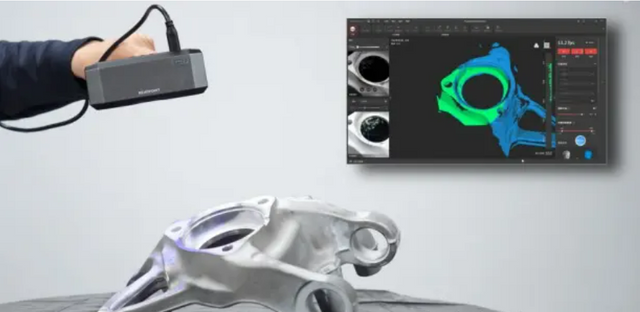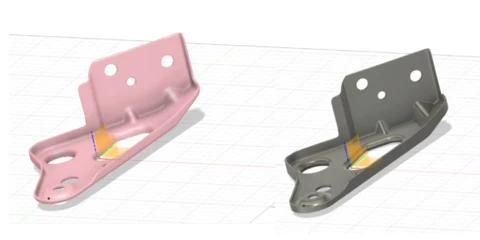From 3D Scanning to CAD Software: Achieving Seamless Integration in Design and Manufacturing
From 3D Scanning to CAD Software: Achieving Seamless Integration in Design and Manufacturing
With the continuous advancement of 3D scanning technology, transforming the shape and details of physical objects into digital data has become increasingly easy. The data captured by 3D scanners often appears in the form of point clouds or mesh formats. While these formats are detailed and accurate, for industries like engineering and manufacturing, this data needs to be converted into Computer-Aided Design (CAD) models. In this blog, we will explore how to import 3D scan data into CAD software and achieve seamless integration between design and manufacturing.
1. 3D Scanning: Capturing the Geometry of Objects
3D scanners can quickly capture the surface geometry of an object, generating high-precision point clouds or mesh files in formats like STL or OBJ. These files contain the external shape and all the details of the object, and for complex geometries, 3D scanning avoids the tedious and error-prone process of manual modeling.

https://www.revopoint3d.com/collections/3d-scanners
However, the scanned models are mainly triangular meshes, which, while suitable for visualization and basic applications, require further conversion into CAD models for modifications and manufacturing purposes.
2. Challenges of Importing 3D Scan Data into CAD
Transferring 3D scan data to CAD models is not a simple import process, as scan data usually contains noise, irregular surfaces, and excessive details. Several steps are needed to handle the conversion process, and here are some common challenges:

Data Cleaning: The scan results may include unwanted noise or missing parts, requiring software tools to clean and repair the model for completeness.
Remodeling: Scanned data is often in dense mesh form, whereas CAD models are typically parametric. To use scan data in CAD software, the mesh data must be converted into editable CAD formats, such as NURBS (Non-Uniform Rational B-Splines).
Simplification and Optimization: High-resolution scan data may be too complex for direct use in CAD systems, requiring mesh simplification or surface reconstruction to make the model more suitable for design and manufacturing.
3. Using Reverse Engineering Software for Conversion
To effectively generate CAD models from 3D scan data, reverse engineering software plays a critical role. These programs convert scanned data into editable CAD formats while performing necessary repairs and optimizations. Examples include:
Geomagic Design X, a widely used reverse engineering tool, can automatically identify geometric features in the scan data and convert them into parametric CAD models. This software integrates seamlessly with popular CAD systems like SolidWorks and AutoCAD.
Autodesk ReCap specializes in processing 3D point cloud data, generating high-quality 3D models, and integrating with other CAD software.
With the help of such software, engineers can retain the details of the scanned model while modifying and refining the design, enabling rapid product iteration.
4. Applications of 3D Scanning and CAD Software
The combination of 3D scanning and CAD software has a wide range of applications, particularly in the following areas:
Product Design and Development: Designers can capture the shape of existing objects through 3D scanning, then modify them in CAD to quickly develop new products or improve existing designs.
Reverse Engineering: When manufacturers don’t have the CAD files for a product, 3D scanning can generate a digital model of the object, which can then be recreated or optimized in CAD software.
Manufacturing and Assembly: After scanning parts, converting them into CAD models ensures precise manufacturing and perfect assembly of components. Additionally, CAD models can be used in processes such as CNC machining and 3D printing.
Quality Inspection: By comparing scanned data with CAD designs, deviations in the manufacturing process can be detected, helping to identify defects in products and improve quality control.
5. Conclusion
The process of converting 3D scan data into CAD models is a major breakthrough in transitioning from physical objects to digital design. Whether in product design, reverse engineering, or manufacturing and quality inspection, this technology significantly improves work efficiency and precision. With the help of advanced reverse engineering software, the smooth integration of 3D scan data into CAD shortens the design cycle and offers more possibilities for innovation in the manufacturing industry. In the future, as 3D scanning and CAD technologies continue to evolve, the entire design and manufacturing process will become smarter and more automated.